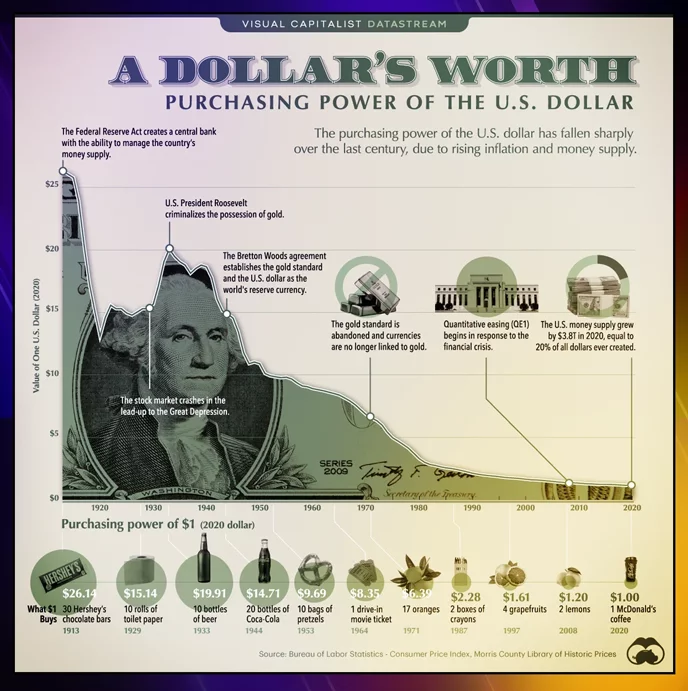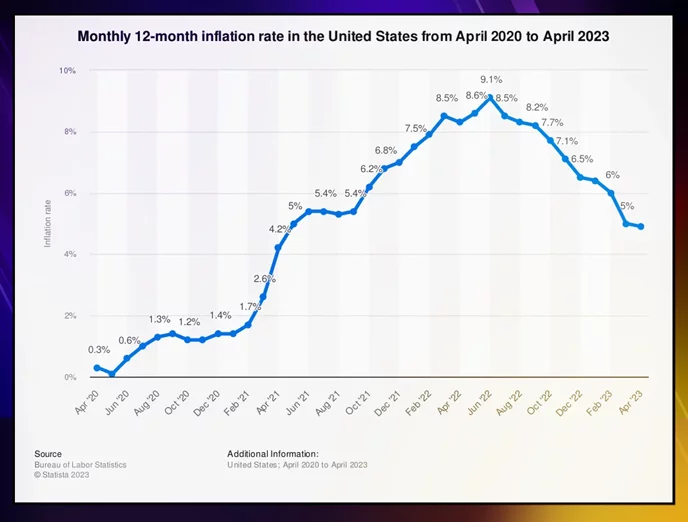
Money vs. Currency: What They Don’t Want You To Know

In our daily lives, we often use the terms "money" and "currency" interchangeably.
However, there are significant differences between these two concepts.
While they are related, understanding their distinctions can provide valuable insights into the world of finance and economics.
In this article, we will explore the disparities between money and currency, their roles in the economy, and the implications they have on our financial well-being.
Quick Takes
- Currency is a medium of exchange which is portable, durable, divisible, and fungible.
- Money is a medium of exchange which has all the properties above, but also stores its value over time.
- The fundamental difference between money vs currency is that money holds its value over time while currency leaks its value over time.
What is Currency?

A currency is a medium of exchange for goods and services which is issued by governments or financial institutions. Currencies are the primary form of payments around the world and are generally accepted at face value.
Currencies have ZERO inherent value. They rely on confidence and trust that other people will accept them as a form of payment. In addition, they typically are controlled by a central entity (i.e. The Federal Reserve, Central Banks, etc) who decide the rate at which they are printed and lended.
Properties of Currency
- Medium of Exchange - provides an easier way than bartering to trade goods and services
- Unit of Account - currencies have a number value on them to indicate quantity
- Portable - you can bring it wherever you go
- Divisible - you can break it into smaller units without losing proportional value
- Durable - it doesn’t degrade or deteriorate over time
- Fungible - 1 unit of X equals 1 unit of X wherever you go and whoever you trade with
Examples of Currency
Each country has its own currency. The Top 5 global currencies are:
- The United States Dollar (USD) - $2.9 trillion average daily volume
- The Euro (EUR) - 1.1 trillion average daily volume
- The Japanese Yen (JPY) - 554 billion average daily volume
- The Pound Sterling (GBP) - 422 billion average daily volume
- The Australian Dollar (AUD) - 223 billion average daily volume
What is Money?
Similar to currency, money is also a medium of exchange for goods and services that is widely accepted for trade.
In contrast to currency, money holds its value over the course of time because of some form of inherent value.
Properties of Money
Money has all of the same properties as currency (medium of exchange, unit of account, portable, durable, divisible, and fungible). The one key addition to this list is its ability to hold value over time.
Types of Money

Commodity Money
Commodity money refers to a type of money that has intrinsic value based on the material it is made of. Historically, commodities such as gold, silver, and precious metals have been used as forms of money. The value of commodity money is derived from the value of the underlying material.
Representative Money
Representative money is a form of currency that represents a claim on a commodity, typically gold or silver. In the past, paper currency could be exchanged for a fixed amount of a precious metal. However, most countries have transitioned to fiat money, and representative money is no longer widely used.
Digital Money
With the rise of digital technologies, digital money has emerged as a form of currency. It exists purely in electronic form and is typically stored and transferred digitally. Cryptocurrencies like PLS and ETH are examples of digital money.
What is a Fiat Currency?
A fiat currency is a currency which is not backed by anything of value such as a commodity like gold.
In 1944, the allied nations made an agreement in Bretton Woods, New Hampshire, to peg all allied currencies to the US dollar and to peg the US dollar to gold at the price of $35 dollars an ounce. This would ensure that, in theory, you could always redeem the fake fiat paper money for something real.
This came to an end in 1971, when Richard Nixon announced that USD could no longer be redeemed for gold at a price of $35 an ounce. In short, this happened because the supply of too many currencies inflated. If people tried to redeem these currencies for gold, there simply would not have been enough gold.
The value of circulating currencies exceeded the supply of the underlying asset aka under-collateralization. Ever heard this before in the crypto space?
So what are we left with? A fiat currency which is backed by nothing but trust.
What is Fiat Currency Backed By?

Fiat currency is backed by nothing but confidence and familiarity.
The trust comes from the fact that governments and institutions issue it as their official currency.
It is the magnitude of their usage that gives it the value. If nobody uses fiat currency, it is just paper and scrap metal. If many people use it, then it has value in proportion to its users (see Metcalfe’s Law).
The Bottom Line
An item can’t really have inherent value as a form of money or currency since humans ultimately determine what it is worth.
Rather, a form of money or currency has certain properties that make it better or worse as a medium of exchange.
These properties then determine the magnitude of adoption, which in turn result in the item having value.
Watch Our Latest Videos.
Subscribe!People Who Liked This Also Loved...
Disclaimer:Please note that nothing on this website constitutes financial advice. Whilst every effort has been made to ensure that the information provided on this website is accurate, individuals must not rely on this information to make a financial or investment decision. Before making any decision, we strongly recommend you consult a qualified professional who should take into account your specific investment objectives, financial situation and individual needs.





